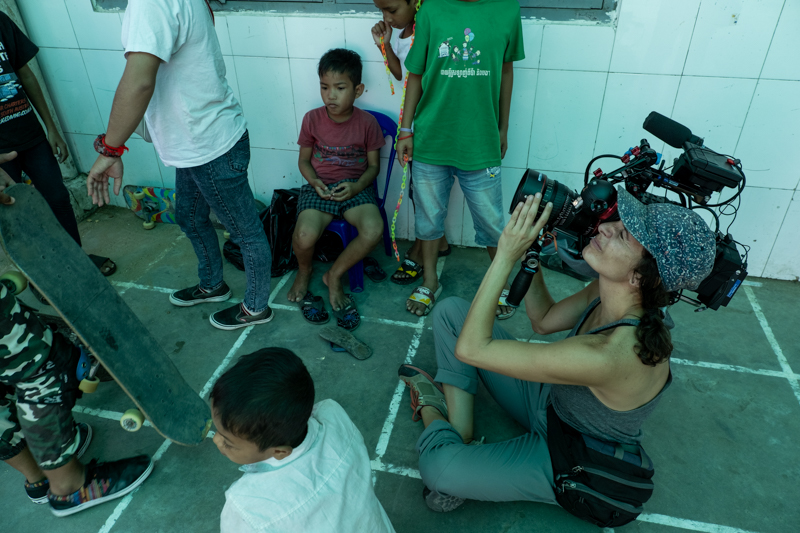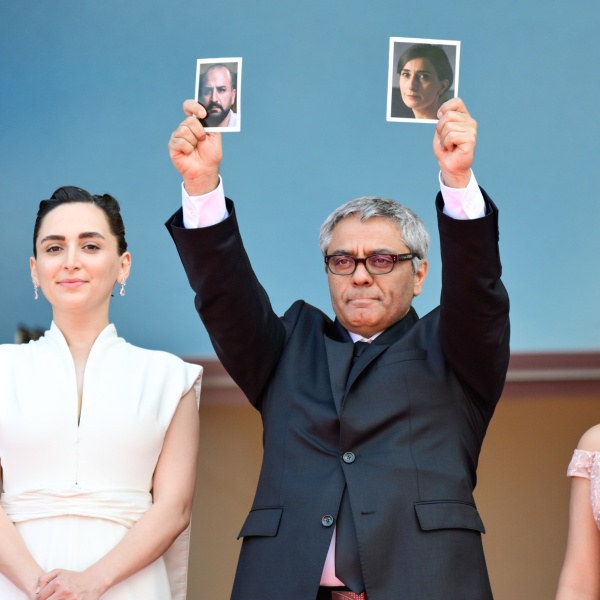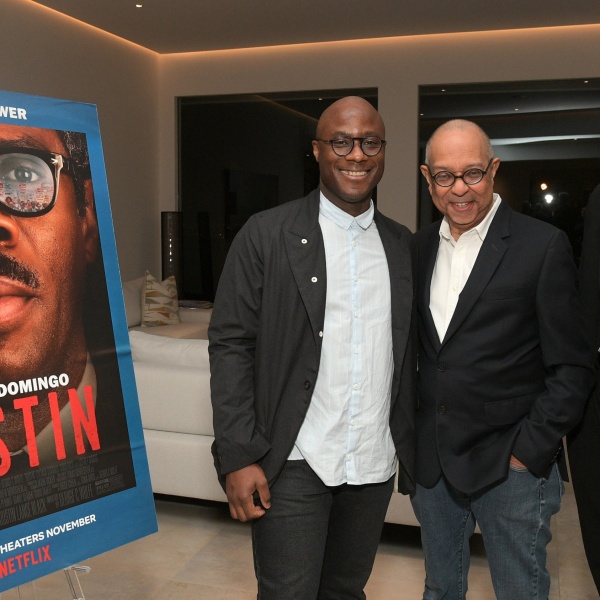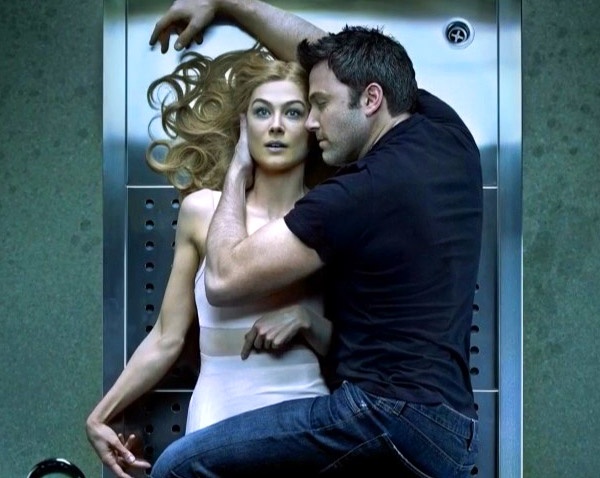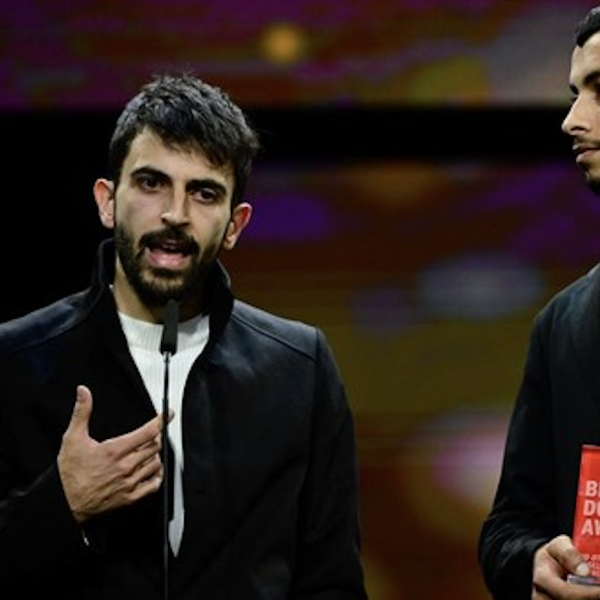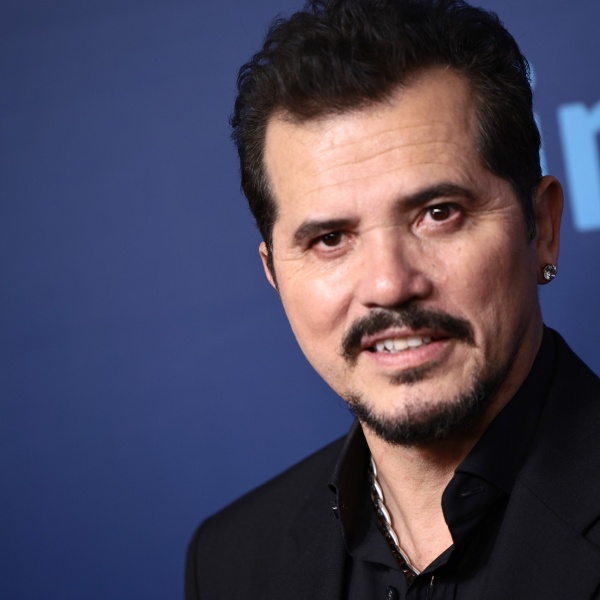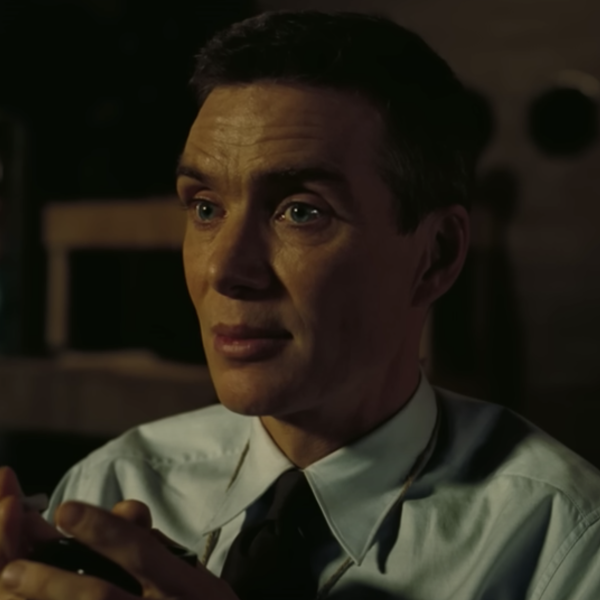Documentary film editors are like crash test dummies, according to Alexis Johnson. You keep letting yourself crash, assuming the seatbelts will work, over and over again just to see what impact a scene is having on you.
“If I am going to harness a feeling, I have to feel it myself,” she said, recalling working on director Alex Gibney’s powerful 2021 documentary “The Forever Prisoner,” about the CIA’s interrogation treatment of prisoner Abu Zubaydah. In addition to the countless hours reworking scenes of waterboarding and other harsh treatments, Johnson edited a sequence that depicts the technique of playing high-decibel music to terrorize a prisoner. It was particularly grueling, as Johnson repeatedly subjected herself to the Red Hot Chili Peppers’ cacophonous “Give It Away” for hours while shaping the depiction of Zubaydah being tortured by the same song.
By the end of working on “The Forever Prisoner,” Johnson said, she was not “in a good headspace,” without knowing why. It is a common phenomenon that is finally being addressed.
“The documentary film industry is in crisis,” said Rebecca Day, a British psychotherapist who is a co-founder of DocuMentality, an initiative being led by her private practice, Film in Mind, and concerned filmmakers who are pushing the documentary film community to talk more openly about the issue of mental health. “We can easily say that. Our research backs that up.”
DocuMentality, led by one of its cofounders, clinical social worker Malikkah Rollins, hosted a symposium and released a report at this May’s Hot Docs documentary film festival in Toronto. The report came after more than 150 filmmakers from the U.S., Canada and Great Britain were divided into 21 focus groups, 100 percent of whom reported having “mental health struggles as a direct result of making films,” according to Day.
At the Dart Center for Journalism and Trauma, a Columbia Journalism School project focused on supporting journalists who cover trauma, there has been a “huge change,” according to its executive director Bruce Shapiro. In the past two years, more than a dozen production companies, including first-time filmmakers and Academy Award winners, have commissioned the Dart Center for training and consultation. “Until recently, we had very limited engagement or interest from the documentary world,” Shapiro says.
Day and other psychotherapists are becoming a regular presence at industry gatherings, including film festivals, where they are invited to host workshops and panel discussions. At this year’s Sundance Film Festival, Utah’s Huntsman Mental Health Institute oversaw a “Coping with PTSD for Documentary Filmmakers” panel, where Oscar-nominated filmmakers Matthew Heineman and Jehane Noujaim spoke vividly about their own struggles. Heineman gave emotional testimony about suffering from PTSD and having perpetual nightmares after being embedded with Mexican drug cartels (“Cartel Land”) and American forces in Afghanistan (“Retrograde”).
“These films change you. They change who you are. They change you physiologically,” said Heinemen, who described the severe psychological strain of receiving desperate entreaties for help from Afghans trying to flee the Taliban.
This public discourse comes on the heels of the pandemic, which prompted a sea change of mental health awareness in all trades. In the documentary world, the momentum had already been building after a series of tragic suicides, albeit each with its own complicated backstory rooted in unique histories of depression not necessarily related to the profession. Yet, considered together, their impact on nonfiction filmmakers as a group has been palpable.
In 2014, Swedish documentarian Malik Bendjelloul died by suicide a year after winning an Oscar for his “Searching for Sugar Man.” And although he worked on big-budget feature films, the death of British location scout Michael Harm in 2017 propelled a film and media industry-wide discussion in Great Britain. The non-profit organization, The Film and TV Charity, responded to Harm’s death by conducting a much-publicized survey of professionals, including nonfiction filmmakers, which found that more than half of respondents had considered taking their own lives.
And then in March 2019, Andrew Berends, a documentary director (“Delta Boys”) and cameraman (“Free Solo”) beloved in the American documentary film world, died by suicide after struggling with depression and having received a diagnosis of Parkinson’s. “Iraq in Fragments” director James Longley wrote movingly in Documentary Magazine, the publication of the International Documentary Association (IDA), about Berends, with words that could clearly resonate with his peers.
“It was probably in Iraq where Andy both found his calling and lost himself. He lost himself in conveying the stark realities of other people, in becoming their voice, their witness,” Longley wrote. “The things he saw took their toll. Our only defense is a movie camera, and it can be a very thin shield to hold back the enormity of the world.”
Berends’ death was a “huge reckoning,” according to Doug Block, a veteran documentarian and DocuMentality cofounder. “Documentary filmmakers tend to be good people who want to help humanity,” he said. “They don’t think of themselves. And they are suffering.”
Block, who founded the D-Word, an online gathering of more than 22,000 documentary professionals, says that Berends’ death was a “big motivating factor” behind the D-Word starting an online thread about mental health, which quickly accumulated an unprecedented number of posts marked by “exceptional length and extraordinary candor,” according to Block.
Documentary Magazine continued the conversation by publishing a first-person essay in early 2021 by veteran documentary cinematographer Jenni Morello, in which she described harrowing work experiences that inspired long-after-production crying jags in the supermarket aisle. Morello wrote of documentary filmmakers becoming “empathy sponges” and how “eventually the sponge becomes full.” The magazine also dedicated a special issue to mental health in the fall of 2021.
“If filmmakers weren’t having to struggle so hard to survive, they would have more time to process the impact of the films they work on,” said Day, the psychotherapist, who is also a former documentary filmmaker. She had seen such a critical need for care that she took three years to train so that she could specifically treat people who work in documentary films. Over the past five years, her practice, Film in Mind, has treated patients with a list of ailments that include chronic fatigue, addiction, development of autoimmune diseases, back pain, inability to sleep, and loss of appetite.
Day points to two main pressure points: The inherent psychological challenges of making non-fiction films about traumatizing subjects and the difficulties that filmmakers face working in an industry that can be maddening to navigate, lacking in resources, and isolating because of its hierarchical structure, diffuse community and often solitary work.
She describes two kinds of trauma; first hand, because many filmmakers, such as Matthew Heineman, expose themselves to dangerous conditions and also because many directors are drawn to themes that they have personal experience with. And there is also secondhand, or vicarious, trauma, where the filmmakers absorb the hurt and distress of their subjects. This can happen in the field or after, particularly when directors and editors spend days watching and rewatching hours of filming.
“The role of filmmakers can be a lot like therapists,” said Day, who expresses incredulity that documentarians expose themselves to such intense work without the proper training of, say, therapists, who maintain networks of supervision support and see their own therapists. “It wouldn’t be ethical to do what we do if we didn’t have the right training,” she said.
“Filmmaking can be hell on earth and it can rest in your muscles and in your pores,” said “Victim/Suspect” director Nancy Schwartzman, who has made three films about sexual assault (“Roll Red Roll”), including her first documentary, “The Line,” in which she confronts her own assailant. “Victim/Suspect,” which came out in May on Netflix, is about sexual assault survivors who are accused by the police of making false reports.

When she is done filming, Schwartzman does “lots of stuff” to care for herself, including body work and therapy. “It’s your job to work on yourself,” she said, adding that making documentaries can also be “amazing” and she feels “joy” in her work. “But it’s not for everybody.”
“I find digging into terrible actions and dark human impulses helps me feel more empowered and less victimized,” Schwartzman added, acknowledging the paradoxical nature of making a documentary that “is not about you, but because you are the filter, it absolutely has to go through you.”
Schwartzman partly felt comfortable working with cinematographer Jenni Morello on “Victim/Suspect” after having read her essay in Documentary Magazine. Both filmmakers are careful about who they collaborate with. The two had many conversations about the “heaviness,” according to Morello, of what they were portraying. Throughout the “Victim/Suspect” shoot, members of the production would check in on each other. The filmmakers made sure that they could count on each other so that, most important, they could “hold space,” says Schwartzman, for the film’s subjects to feel comfortable, even empowered, during interviews.
These sorts of deliberate, intentional conversations between filmmakers are happening with greater frequency, according to documentary director and editor Chithra Jeyaram. “I work best with filmmakers who understand that there’s a clear intrinsic value in a project,” she said. “If the incentive is for a festival or to pay the bills, it’s not going to be fruitful.”
It has taken more than a decade for Jeyaram to achieve what she calls an “equilibrium” regarding her personal life and work as a filmmaker. In 2014, primarily distraught over her unfulfilled desire to become a mother, she attempted to take her own life. She was diagnosed with severe situational depression. In the mental health ward, where she was not allowed electronic devices, Jeyaram saw a newspaper article where she read about Bendjelloul. It was shocking to Jeyaram to see such a vivid example of how success could not bring happiness.
“How we process the journey is far more important than the outcome,” she said. “As a filmmaker and as a human being, I understand that much better now.”
For the past five years, Jeyaram has been working on a documentary, “Our Daughters,” about adoption. “It has given me so much joy. Making the film has broadened my understanding of motherhood,” she said. “I wasn’t expecting that. I had thought it would help me learn how to adopt.”
The film has accumulated many of the grants and sort of festival and foundation support that gives it a chance to be recognized by the industry, but Jeyaram is adamant about keeping her priorities straight. “I am in the place where if the film doesn’t do well in the marketplace, it will be OK,” she said. “It has already done for me, as a human being, what I had hoped for.”
This reframing of success is one of the major goals that DocuMentality hopes can help alleviate some of the stresses of being a documentary filmmaker. But changing filmmakers’ minds is just one step. Day and others are hoping that structural change is also possible, starting with making access to funding less hierarchical and alienating.
“We need to equalize the position of filmmakers with funders and broadcasters and the organizations that support films,” Day said. “We need to change the power balance so that filmmakers feel that they have autonomy.”
Normalizing mental health support for filmmakers would be another achievement, according to Day. Streaming companies such as Netflix and Max are beginning to offer certain productions mental health supervisors to assist filmmakers. Morello, for instance, was offered such support by Netflix on “Victim/Suspect.”
Day also imagines a formalized health and safety assessment for productions so that funders and filmmakers are locked in on the potential strains that could come from greenlighting a documentary that might last years.
Putting up guard rails would undoubtedly help filmmakers, but there’s no way to entirely protect those who choose to portray the most disturbing reaches of human experience.
The Dart Center’s research director, Elana Newman, a professor of psychology at the University of Tulsa, described a “dance of approach and avoidance” when it comes to documentarians who portray trauma. “There’s a dance when anyone is responding to something traumatizing,” she said. “They either go straight for it or they are repelled by it.”
This paradoxical tension has always been at play in documentaries that portray suffering, and it’s becoming part of the vernacular both on screen and off. For example, at Sundance this year, the heart-wrenching and disturbingly graphic documentary “20 Days in Mariupol” portrays the horrors of the recent Russian invasion of Ukraine. In the film, which will be released in July, Ukrainian director Mstyslav Chernov narrates, “My brain wants desperately to forget all this but the camera won’t let it happen.”
According to Newman, Chernov’s narration embodies the complexity of both a traumatized mind as well as the perspective of the documentary filmmaker.
“Now that documentaries are telling more stories about trauma,” she said. “Filmmakers are coming to us because they don’t have the tools for working through these very complicated issues. We try to help them.”
